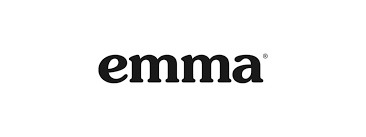Welcome to the ultimate face-off between two of the email marketing world’s heavyweights: Omnisend and Emma. As we step into 2024, the digital landscape is more competitive than ever, making the choice of the right email marketing tool critical for businesses. In this comprehensive guide, we’ll dissect these platforms, providing you with an in-depth comparison to help you make an informed decision. So, let’s dive right in!
| Omnisend | Emma |
|---|---|
 |  |
| G2 Score – 4.5 out of 5 stars | G2 Score – 4.0 out of 5 stars |
| TrustRadius Score – 6.1/10 | TrustRadius Score – 8.6/10 |
User Interface and Ease of Use
Simplifying the Complex World of Email Marketing
In the realm of email marketing, the ease of use and the quality of the user interface (UI) can significantly impact your marketing efficiency and effectiveness. Both Omnisend and Emma offer unique experiences, but how do they stack up against each other in terms of user-friendliness?
Omnisend: Streamlining Your Marketing Efforts
Omnisend is renowned for its intuitive user interface, designed to streamline the email marketing process. Its dashboard is clean, uncluttered, and easy to navigate, making it a favorite among marketers who prefer to get their campaigns up and running without any fuss.
One of the standout features of Omnisend is its visual email editor. The drag-and-drop functionality allows even those with no graphic design experience to create stunning, responsive emails quickly. It’s not just about aesthetics; the platform also ensures that these emails are optimized for performance, with a focus on driving conversions.
Omnisend’s automation features are also worth noting. The platform allows you to set up automated email sequences with ease, thanks to its user-friendly workflow editor. Whether you’re looking to send welcome emails, birthday greetings, or abandoned cart reminders, Omnisend makes it hassle-free, allowing you to focus more on strategy and less on technicalities.
Emma: A Focus on Sophistication and Customization
Emma, on the other hand, takes a slightly different approach. Its platform is geared towards providing a sophisticated experience, with a focus on customization and detailed analytics. The interface is sleek and professional, though it might come with a steeper learning curve compared to Omnisend.
Emma’s strength lies in its powerful segmentation tools and detailed reporting features. The platform allows you to dive deep into your email campaign data, providing insights that can help refine your marketing strategies. However, this level of detail and customization might be more than what some businesses need, especially smaller ones or those just starting out with email marketing.
Email Automation and Personalization
Crafting Targeted Campaigns with Ease
Email automation and personalization are at the heart of effective email marketing. Let’s delve into how Omnisend and Emma handle these crucial features, shaping the way businesses connect with their audience.
Omnisend: Mastering Automation with Simplicity
Omnisend takes a streamlined approach to email automation, making it straightforward for businesses to set up and manage automated email sequences. This is particularly beneficial for businesses looking to engage customers at various touchpoints without
investing excessive time and resources.
The platform offers a range of pre-built automation templates, such as welcome series, abandoned cart emails, and customer re-engagement campaigns. These templates are not only time-savers but also optimized based on industry best practices, increasing the likelihood of successful engagement and conversion.
Personalization in Omnisend goes beyond just addressing recipients by name. The platform allows for dynamic content insertion based on customer behavior, preferences, and purchase history. This level of personalization ensures that each email feels tailored to the individual, significantly enhancing the user experience and fostering customer loyalty.
Emma: Advanced Segmentation for Personalized Campaigns
Emma distinguishes itself with its advanced segmentation tools, enabling businesses to create highly personalized and targeted email campaigns. The platform’s strength lies in its ability to dissect your audience into detailed segments based on a variety of criteria, including user behavior, engagement levels, and demographics.
This granular approach to segmentation allows for the creation of highly relevant and personalized email content. Emma’s sophisticated automation tools enable you to trigger emails based on specific actions or changes in customer data, ensuring that your messages are timely and relevant.
Additionally, Emma offers powerful A/B testing capabilities, allowing you to refine your emails for optimal engagement and effectiveness. This feature is invaluable for businesses looking to continuously improve their email marketing strategy based on data-driven insights.
Integration and Compatibility
Connecting Your Marketing Ecosystem
In today’s digital age, the ability of an email marketing tool to integrate with other platforms and services is a key determinant of its effectiveness. Let’s compare Omnisend and Emma in terms of their integration capabilities and how they enhance the overall marketing ecosystem.
Omnisend: A Hub for E-commerce Integration
Omnisend stands out for its robust integration with a wide array of e-commerce platforms. This integration is a significant boon for online retailers, as it allows for a seamless flow of customer data between their e-commerce platform and their email marketing tool.
The platform supports integration with popular e-commerce systems like Shopify, WooCommerce, and Magento, among others. This means you can easily sync customer information, track purchase behavior, and tailor your email campaigns based on specific customer actions, like cart abandonment or recent purchases.
Apart from e-commerce integrations, Omnisend also connects with various CRM tools, social media platforms, and other marketing tools, making it a versatile choice for businesses looking to create a cohesive digital marketing strategy.
Emma: Focused on Diverse Integration
Emma also offers a strong suite of integration options, though its focus is broader than just e-commerce. The platform integrates with CRM systems, analytics tools, and various other third-party applications, facilitating a well-rounded marketing approach.
Emma’s strength lies in its ability to fit into a diverse marketing tech stack. Whether you’re looking to connect your email marketing efforts with your customer relationship management, your analytics platform, or even your social media campaigns, Emma offers the necessary integration capabilities.
This breadth of integration makes Emma a suitable option for businesses that are not solely focused on e-commerce but are looking for a comprehensive tool that can align with various aspects of their digital marketing strategy.
Integration and Compatibility Verdict
For e-commerce businesses, Omnisend is a clear frontrunner due to its specialized integrations with e-commerce platforms, which allow for a seamless blend of email marketing and online retail.
Emma, on the other hand, is a great choice for businesses seeking a tool that offers a wide range of integrations. Its ability to connect with various types of platforms makes it a versatile option for a broader spectrum of businesses, especially those looking to integrate their email marketing with a diverse set of tools and systems.
Reporting and Analytics
Measuring Success in Your Email Campaigns
In the competitive world of email marketing, the ability to analyze and understand campaign performance is crucial for making data-driven decisions. Let’s compare how Omnisend and Emma fare in their reporting and analytics capabilities.
Omnisend: Insightful and User-Friendly Analytics
Omnisend’s approach to analytics is centered around user-friendliness and actionable insights. The platform provides comprehensive analytics that cover all the key metrics you need to evaluate your email campaigns, such as open rates, click-through rates, and conversion rates.
One of the highlights of Omnisend’s analytics is the visual representation of data. The platform offers intuitive dashboards that make it easy to interpret the results of your campaigns, helping you understand your performance at a glance. This simplicity in data presentation is particularly beneficial for businesses that want quick insights without diving too deep into complex data analysis.
Moreover, Omnisend’s integration with e-commerce platforms means you can easily track how your email campaigns are directly affecting sales and revenue. This capability is invaluable for e-commerce businesses that need to tie their marketing efforts to tangible financial results.
Emma: Detailed and Customizable Reporting
Emma, in contrast, offers a more detailed and customizable approach to analytics. The platform provides in-depth reporting features that give you a granular view of your campaign performance. You can dive deep into metrics, segment your reports, and even create custom reports tailored to your specific needs.
This level of detail in Emma’s analytics is ideal for businesses that are data-driven and want to deeply understand the nuances of their email marketing efforts. The platform’s ability to segment and customize reports means you can get exactly the information you need to make informed decisions about your marketing strategies.
Emma also offers robust A/B testing capabilities, allowing you to test different elements of your email campaigns and learn from the results. This feature is crucial for businesses looking to continuously optimize their email marketing for better performance.

Related: Check out our free SEO suite

Pricing and Value for Money
Omnisend
- Free Plan: Includes basic email marketing features, allowing up to 15,000 emails per month but with a daily limit.
- Standard Plan: Starts around $16 per month for up to 500 subscribers, including automation workflows, SMS campaigns, and audience segmentation.
- Pro Plan: Starting from around $99 per month for up to 500 subscribers, adding features like advanced reporting, web push notifications, and unlimited emails.
- Enterprise Plan: Custom pricing for large-scale businesses, offering features like dedicated account management, deliverability support, and custom IP address.
Emma
- Pricing is typically tiered based on features and list size:
- Pro Plan: Offers automation, segmentation, and analytics. Pricing usually starts at around $89/month.
- Plus Plan: Includes additional features like landing pages and A/B testing. Pricing is higher and usually requires a quote from Emma.
- Enterprise Plan: Custom pricing for advanced needs like custom integrations and dedicated support.
Cost-Effectiveness in Your Email Marketing Journey
Pricing is a critical factor when choosing an email marketing tool, as it needs to align with your budget and the value you expect to receive. Let’s evaluate Omnisend and Emma in terms of their pricing structures and the value they offer for your investment.
Omnisend: Scalable Pricing for Growing Businesses
Omnisend offers a tiered pricing structure, which is designed to cater to businesses of different sizes and needs. Starting with a free plan, Omnisend makes it accessible for small businesses or those just starting with email marketing to begin without upfront investment.
As your business grows and your marketing needs become more sophisticated, Omnisend’s paid plans offer more advanced features. These features include enhanced segmentation, more detailed analytics, and multi-channel marketing capabilities. The pricing is based on the number of subscribers and emails sent, allowing businesses to scale their costs in line with their growth and usage.
This scalable approach to pricing makes Omnisend a cost-effective option for growing businesses, providing the flexibility to expand your marketing efforts as your business evolves.
Emma: Tailored Plans for Specific Needs
Emma’s pricing model is structured around customized plans that are tailored to the specific needs of each business. Instead of a one-size-fits-all approach, Emma offers plans that are designed based on the size of your email list, the features you need, and the level of support required.
This custom pricing can be particularly beneficial for businesses with unique requirements or those who need a more personalized approach to their email marketing. Emma’s focus on providing tailored solutions means that you pay for exactly what you need, without unnecessary extras.
However, the lack of transparent pricing on their website means that businesses need to contact Emma directly to get a quote, which can be a drawback for those looking for quick and easy pricing information.
Conclusion
In conclusion, both Omnisend and Emma offer compelling features and capabilities as email marketing tools, but they cater to different needs and preferences.
Omnisend stands out as an excellent choice for businesses looking for an intuitive, user-friendly platform that simplifies the email marketing process. Its strength lies in its ease of use, visually appealing interface, effective automation, and multi-channel marketing capabilities. The platform’s scalable pricing structure makes it a suitable option for growing businesses, offering a balance between functionality and affordability.
Emma, on the other hand, is ideal for businesses that require a more tailored approach to email marketing. Its strength is in its advanced segmentation, detailed analytics, and customizable reporting features. The platform’s focus on providing personalized solutions means it can be a perfect fit for businesses with specific needs, though this comes with the need for a direct inquiry into pricing and plans.
Read Next:
- Keywords to Power Your Green Energy SEO Strategy
- SEO 101: Positioning Your Green Energy Startup
- Boosting Conversions for Green Products with SEO
- Navigational SEO for Sustainable Online Retailers
- SEO Best Practices for Green E-Commerce Sites






















Comments are closed.